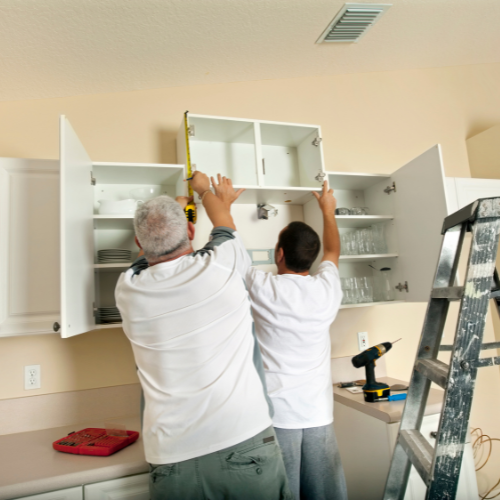How Are kitchen cabinets installed
by siteadmin

In a new kitchen, cabinets are the main item. Therefore, it is crucial that they are installed and laid out correctly. To begin installing cabinets, identify the wall's studs. If you have a studfinder handy, it may be easier to use the straight 2×4. Place the level over the 2×4; if the reading is level, then you have located the stud. Mark the wall with a pencil at the location of the stud. This will help you to locate it in the future.
This method also works for walls that are finished and don't have exposed sheetrock, joists or sheetrock. Installing the ledger board, also known as a cleat or slat, is next. The ledger boards or cleats will support the cabinets whilst you screw them onto the studs. For this project, you'll require a powerful hammer and a screw gun capable of driving 2-1/2-in. The screw clamp should open up at least 8 inches. You'll need to use a block sander, belt sander and a bundle shims for the final touches.
The cabinet boxes can be installed after the cleats have been installed and the studs located. Most are made of plywood. But some manufacturers use hardwoods. These are typically more expensive. However, they are stronger than woods from leafy trees.
To ensure that the wall is straight, use a spirit level to test it. If the wall has a lot of unevenness, you may have to shim to even it out. This method will take a little more time to complete than simply shimming around the cabinet frames. But it is crucial for ensuring your cabinets are installed perfectly square.
If you have a home that is constructed differently, there could be spaces between studs for cabinets. Filler strips are used to fill the spaces. They can be cut into any size you need. If the filler strip measures less than 6 in. If the filler strips is less that 6 in.
After you have cut the filler, you will need to attach it with self-drilling nails. It is important to slightly overcut your filler strips to ensure they can be snapped off flush with the cabinet doors. Use shims as needed to keep your filler strips flush on the cabinet frames. Any gaps between your cabinets and the wall should also be shimmed. These are tricky because there is often a gap between the cabinets and the walls. But you can minimize it by using shims with a smaller gap. This will ensure that the cabinet fronts are flush against the wall. It's well worth the extra work to do it properly.
211 N York Rd, Hatboro, PA 19040
In a new kitchen, cabinets are the main item. Therefore, it is crucial that they are installed and laid out correctly. To begin installing cabinets, identify the wall's studs. If you have a studfinder handy, it may be easier to use the straight 2×4. Place the level over the 2×4; if the reading is level,…
Recent Posts
- Right Foot Marketing Group: Pioneering Excellence in Digital Advertising on Long Island
- Indy Gutter Company Sets the Standard for Gutter Services in Indianapolis
- Richmond Gutter Company: The Best Option in Richmond, Virginia for Gutter Solutions
- A Home Away from Home for Your Furry Friends
- Cincinnati Gutter Cleaning: Your Premier Choice for Comprehensive Gutter Services in Cincinnati
